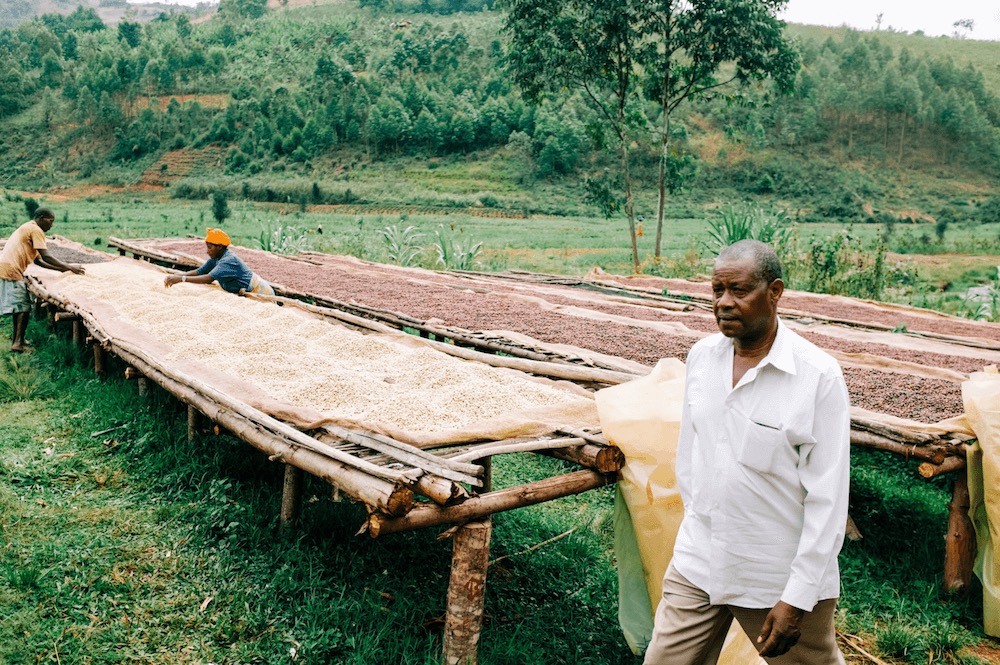Challenger
A Perfect Blend of Two Coffees from Opposite Ends of the Earth

Arrott Smith
Roasting Manager & Quality Control

Image of Challenger Point via SummitPost
If you take a stroll around the shop or browse our coffees online today, you might notice a new coffee. It is a coffee with a name steeped in mystery and intrigue: Challenger.
Challenger, Peregrine’s newest signature blend, is a symbolic coffee for us and one we are proud of.
Named after the ever-famous “Challenger Point” (which was actually named after the space shuttle), this coffee is a 50/50 blend of coffees from Colombia and Burundi. At 14,000 feet, Challenger Point looks down on our humble valley, both day and night. Along with Kit Carson Mountain, it helps make up one of the most iconic and deadly traverses in this region of Colorado.
Composed of two coffees from different ends of the earth, you’d expect an end product that’s anything but harmonious.
You see, around the world, you will encounter many different species and varieties of coffee. Just like with a fine wine or craft beer, the little differences go a long way with the end product. A different type of grape produces a different wine. Although not as stark as the difference between red and white wine, an African coffee is markedly different when compared to a South American coffee.
When talking about wine, we often hear about “terroir.” Terroir is best explained to be the difference in soil, climate and elevation that a certain grape is grown at. Even novice wine drinkers know to look for wines grown in Napa. Why? Napa’s terroir is storied and recognizable. If your wine is from Napa, there’s a certain understood quality and a certain set of characteristics you can rely on.
Coffee is no different.

Our Colombian component of Challenger was grown on small, regional community lots and then brought together to a central location. Although it’s not from one specific farm, there is a uniform product across Tequendama. Typically, Colombian coffees are known to have a wonderful balance of acidity and body. You’ll often find notes of tart cherry and dark chocolate.
The component from Burundi is a different story entirely. A direct trade with Pierre Nzeyimana and his sons, this coffee is more well-known for us. Year after year, this red bourbon from Burundi is chock-full of notes reminiscent of dark berries, wood, and deep chocolate. African coffees, generally speaking, are known to be far more on the side of acidic and fruity coffees.
We chose this particular blend of coffees in hopes of “challenging” our customers in a few different ways. Ultimately, it challenged our notions about coffee as well.
Here are some “challenges,” perspectives and notions we hope to overcome with this coffee:
“I just don’t enjoy naturally processed coffees or coffees from Africa—they’re too fruity and acidic.”
- Meet Challenger: a well-balanced, chocolatey blend with African, naturally processed coffee.
“If you blend two acidic, fruit-forward coffees, you’ll get a coffee far too intense.”
- These acidic and fruit-forward coffees balance each other out beautifully, resulting in a blend of creamy texture and nutty flavor.
“Isn’t Colombia known for mass-produced, generic-tasting coffees?”
- Perhaps that was the case long ago; but now, Colombia is known for producing some of the highest quality coffees in the world. As an origin, it has the largest range of notes and flavor possibilities of any country.

As a coffee roaster, one of our philosophies has been to create coffees that “pleasantly surprise.” We could not have hoped for a greater result than a cup of coffee that pleasantly surprised us as well.
No matter which coffee we’re talking about, we would never ask you to take our word for it. So purchase a bag of Challenger and decide for yourself! If you live here locally, come in and ask for a cup of Challenger. We would be delighted to “challenge” you with one.
Devoted to the Journey,
Arrott

0 Comments